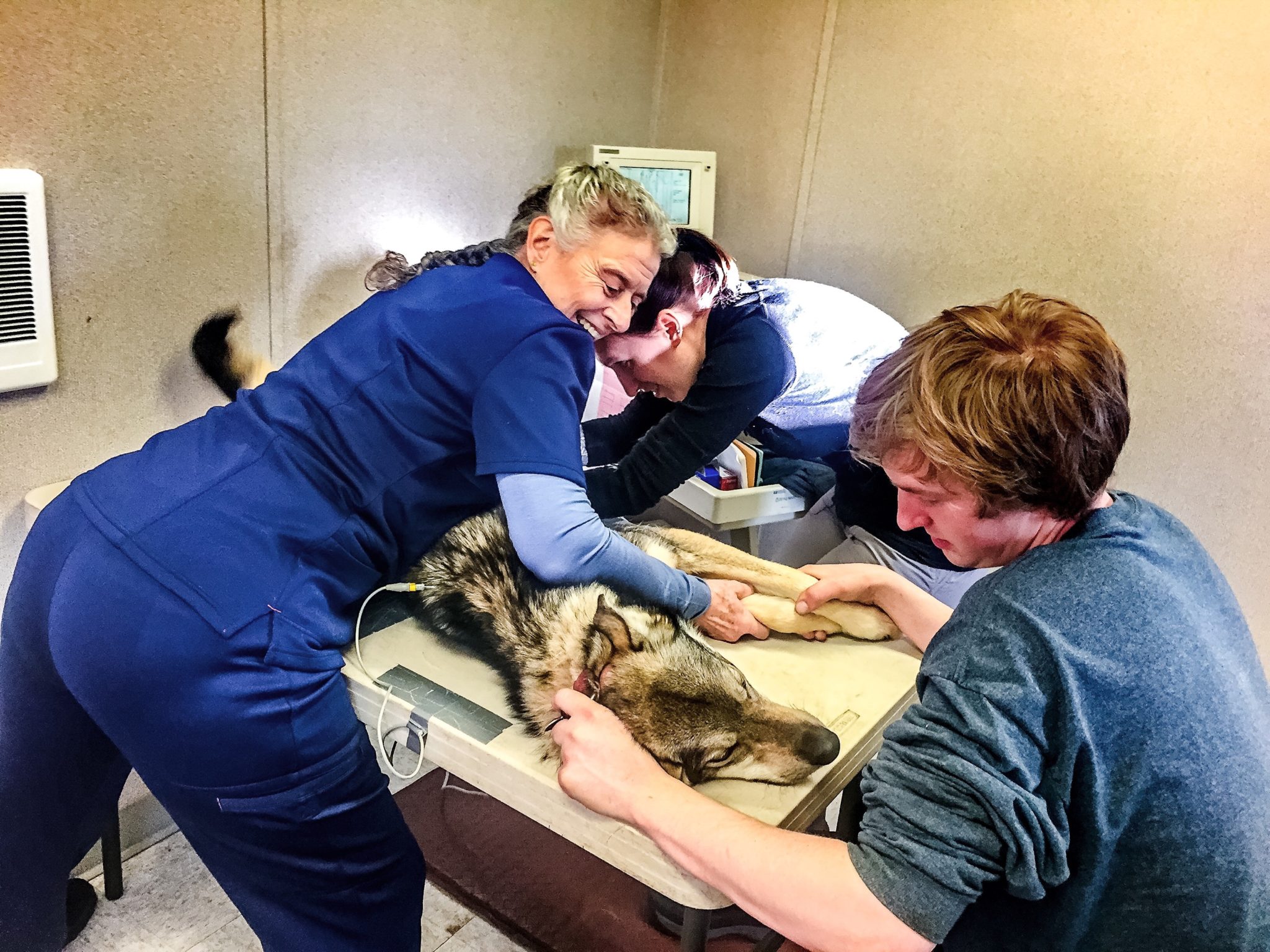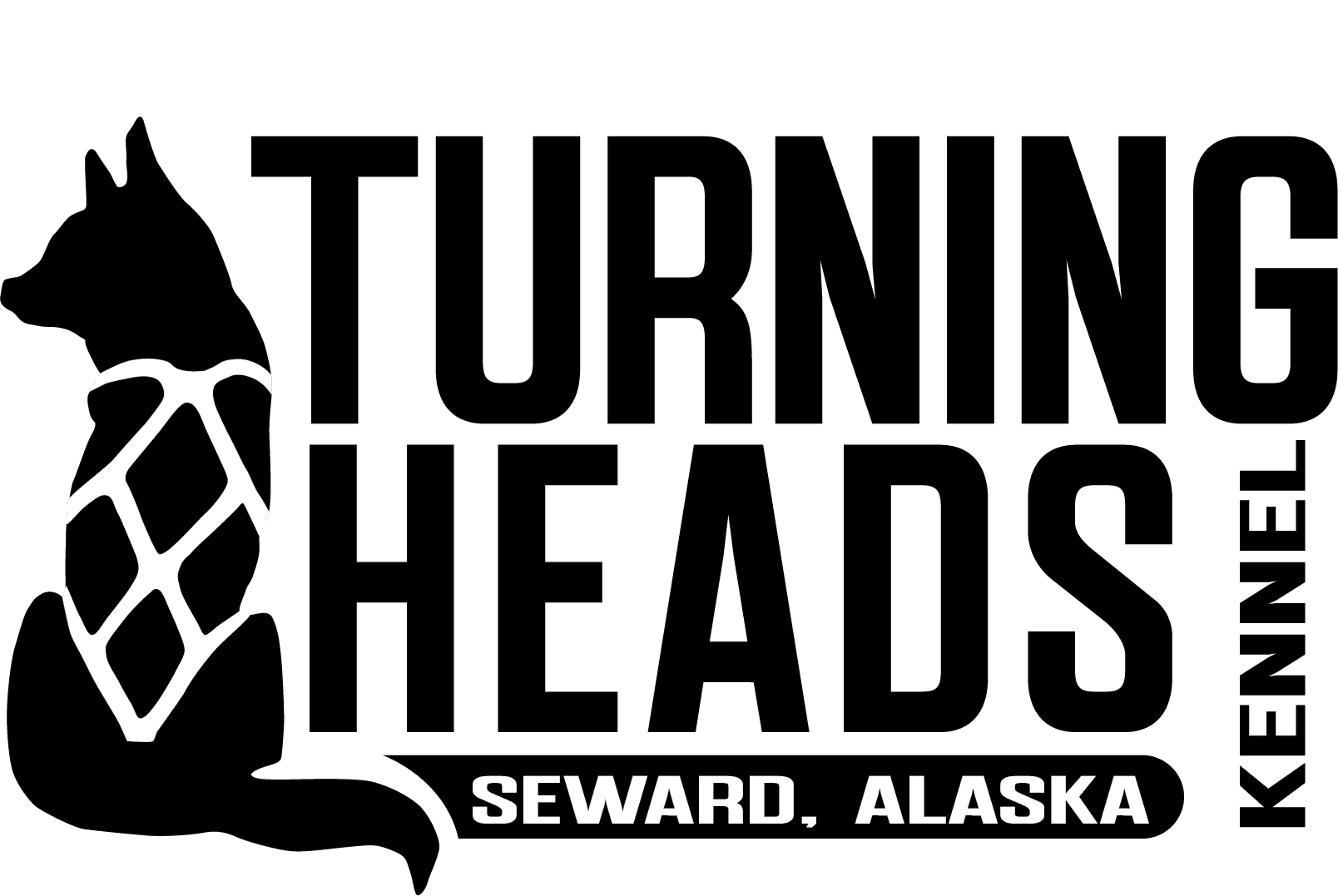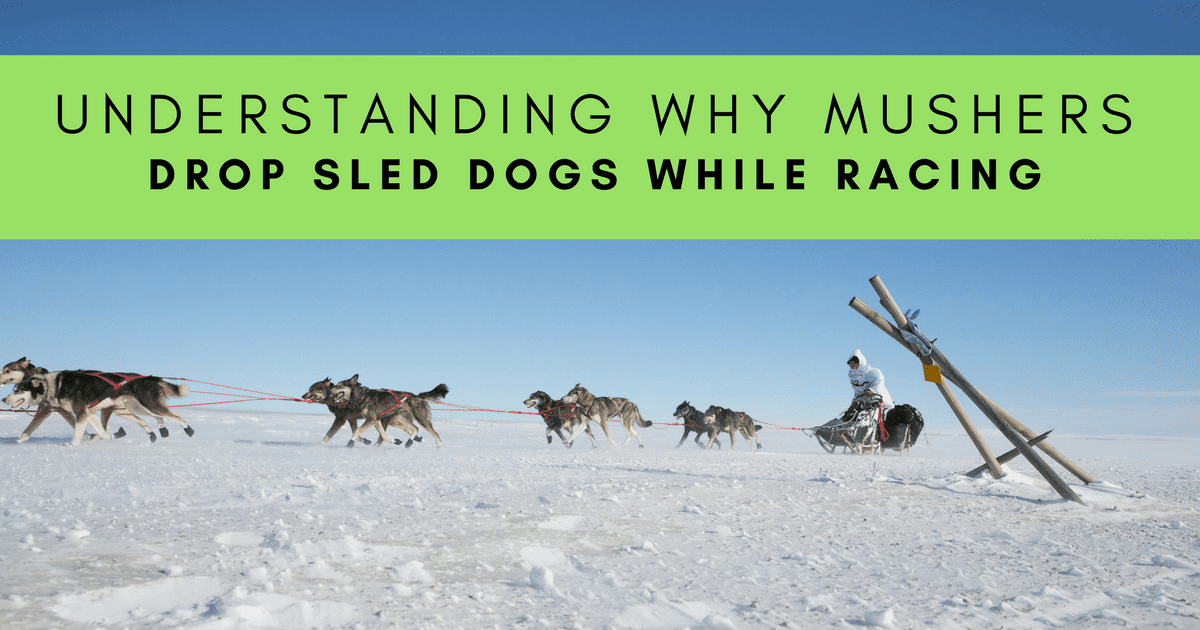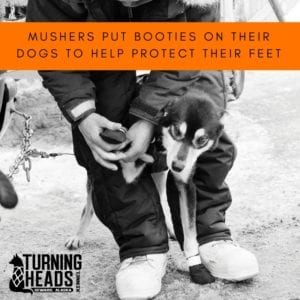Not every dog that enters an endurance sled dog race as part of a team ends up finishing. In fact, it is quite common for mushers to return or drop dogs from their teams. Events like the Iditarod have elaborate systems in place to help manage and care for drop dogs.
Endurance dog sled races are races that range from shorter 200-mile-long events to premier 1,000-mile-long events like the Iditarod Sled Dog Race and the Yukon Quest. Like any endurance sporting event, teams that compete must begin training months prior so that they are adequately prepared. Most dogs start in 200 to 300-mile events, like the Knik 200 Sled Dog Race or the Copper Basin 300, when they are about 1.5 years old and will graduate to 1,000-mile races when they are older. Competitive racing kennels often have dogs complete their first 1000-mile race doing what is commonly referred to as a “puppy schedule.” This schedule is designed with lots of rest and is intentionally slower-paced.
The purpose of a puppy schedule is to show the dogs the race course at a low-key pace so that the following year, they can run competitively and know where they’re going. It’s like a marathon runner running their race route ahead of time or carrying a GPS so that they know where they at in the race. With this knowledge, athletes are able to pace themselves better.
During a mid or long-distance dog sled race, it is quite common to see the size of a dog team drop over the duration of a race. Sled dogs are dropped during races for a number of reasons, but the predominant reason dogs are dropped has to do with the dynamics of working with a group of high-caliber athletes. When running sled dogs, a musher can only go as fast as the slowest team member. Even though all our athletes are at peak physical fitness, over the course of 1,000 miles small differences in athleticism are accentuated. When we cater our team’s speed to the slowest member, the dogs who are more athletic are not pushing themselves at that pace. If you normally run a 9-minute mile but decide to run with a group of your friends who are less athletic and only can do a 12-minute mile pace, you will find that your friends will likely tire quicker than you do. Something similar happens with our dogs. We cater to our slowest team members and when we eventually drop them, the remaining teammates are able to maintain speed or even travel a little faster.
It is an unfortunate misconception that sled dogs do not finish races because the race is too difficult or because the musher is pushing the team too hard. That is not the case at all! Mushers drop dogs because we are trying to work as efficiently as possible and because it is not always fair to keep all our teammates as part of the team. Peak performance for one athlete is different for another. As the coach of the team, our job is to help each athlete on our team reach their full potential. Good sled dog care requires dropping dogs.
As a musher, we do not devote our lives to raising and working with our dogs to push them beyond their abilities. Instead, we coach our dogs. Through our training and deep relationship with each individual canine athlete, we help each dog reach their full potential. Dropping dogs is a normal part of racing. When a dog is dropped it does not mean that dog has “failed” any more than it does when a player is subbed out of a soccer match — that player has contributed a valuable part to the team’s effort thus far. Any dog who is a part of the team, is part of the team’s success.
For an event like Iditarod, bigger dogs an play a valuable role during the first several hundred miles of the race as teams travel through several mountain ranges. These uphill climbs are hard and require strong dogs and bigger teams. These dogs provide valuable strength during this segment of trail, which may be tougher and slower going, but may not be as fast or nimble during flatter parts of the trail. These dogs, however, have provided power and have allowed some of their smaller teammates to do less work, keeping them more well-rested for later segments of the race. This is a very strategic set up that many dog teams use and is a common reason why we see team size drop after crossing the Alaska range; these bigger dogs have done their job and have put in their contribution to help their team and have allowed their faster teammates to be better rested.
Sled dogs may also be dropped from a team due to illness or injury. Although mushers work diligently to protect their dogs from getting sick, illness is an inevitable part of racing when so many dogs are brought together during racing. During the Iditarod, an average of 75 teams compete, each with 16 dogs — that’s 1200 sled dogs on the trail. During Iditarod, teams come from all over Alaska, a huge state, the lower 48, Canada, and Europe (primarily Norway). That’s a lot of ground! Inevitably some dogs carry bugs that other dogs have not been exposed to. The result is that some dogs get sick. This is no different than when kids first go to kindergarten or preschool; they are exposed to new things and illness results. If a sled dog does not feel well, we drop it from the team. Illness can be determined by behavioral changes, such as not eating or a lethargic attitude or by external signs such as diarrhea or vomiting. A vet is consulted and, if needed, the dog is removed from the team where it will receive the necessary medical treatment.
In order to help protect our dogs from illness, our dogs do a number of races and train in popular areas for mushing to increase their exposure to other sled dogs. We do this to help our dogs build immunity to different bugs and viruses. In order to participate in dog sled races, all sled dogs also must follow a strict vaccination protocol. Vaccination records are checked by a team of veterinarians before the start of each race. Regular deworming is also done to help ensure the health of our dogs. On top of these standard practices, racing sled dogs are also given probiotics as well as various vitamin supplements to help boost their immune system and help improve athletic performance.

Additionally, racing standards for Iditarod include even more measures to help protect our dogs: dogs must undergo ECG’s and bloodwork to ensure that they have no underlying heart or medical conditions. Despite these precautions, dogs still develop illnesses and get sick. When this occurs, dogs are dropped from the race.
Dogs may also be dropped from a dog sled team due to injury. Injuries are an inevitable part of any sports competition. Our goal as mushers is always to minimize injuries to our dogs. This is done by building a training regimen that helps prepare our dogs for the race they will be doing. We start dogs out by running short mileage and building up their muscles and endurance over time. During the summer months, we do “weight lift training” when we operate our summer dog sled tours. Our first goal in our dog care is always injury avoidance. This is done through preventative gear, knowing the dogs, and being able to read trail conditions and pace the team accordingly, as well as by following a “warm up” and a “cool down” procedure.
We use various pieces of equipment to help our dogs give great performances out on the trail. After all, the better care we take of our dogs, the better they will be able to run and compete. The most important piece of gear for injury prevention is our dog booties. Dog booties are the running shoes of the dog sled world. They are made out of cordura nylon. We put them on over our dogs’ paws to protect them from getting cuts from ice or rock and it also helps prevent snow from balling up in between their toes.
Dog booties traditionally come in four sizes: small, medium, large, and extra-large. Because the front feet and the back feet of a sled dog vary widely, some dogs may wear two different sizes of booties. Like any running shoe, dog booties aren’t designed to last forever. In fact, most dog booties only last one run before they start to develop wear and tear. When we race our dogs, we always put booties on before a run and we take them off when it is time for the dogs to rest. Just like humans, dogs don’t enjoy wearing their shoes to bed! When it is time to run again, we put on a brand new set of booties. During the course of a training and racing season, our kennel of 50 sled dogs goes through about 8,000 dog booties. These booties cost approximately $1 to $1.25 each and are one of the biggest expenses of running a kennel outside of dog food.
When we have decided to rest the team, we then have other gear that we use on the dogs to help their muscles recover. When the team stops, we put out straw to elevate them off the snow so that they stay warmer. We use jackets to also ensure that the dogs stay warm. We put heat, in the form of hand warmers, on dogs who are more likely to develop injuries or who may have minor inflammation. This is no different than what we do as human athletes. Mushers will then go through their team and rub down their dogs using dog massage oil, helping the dogs stretch and relax. When it is time to go again, we booty our dogs and we make sure the dogs ease into their run, rather than starting off at a fast pace. Like humans, dogs also need their muscles to properly warm up.
Injuries typically result from bad trail conditions or, like in human athletes, may be the result of overuse. Fresh snow, which creates harder pulling conditions, often results in more injuries as the snow is punchy and has no base. In these conditions, it’s more likely to see shoulder injuries develop as a result of a dog misstepping. Hard-pack or icy trails allow teams to travel faster but the firmer trail creates more impact and can result in more wrist injuries. Older dogs, near the end of their career, are more likely to develop stiffness and soreness than young dogs who are in their physical primer. As mushers, we are aware of how different trail conditions will affect each of our dogs: that’s why some dogs will get longer massages or will get wrist wraps whereas others don’t.
Finally, sometimes mushers choose to drop dogs because of something they as a musher just “feel in their gut.” As a musher, you can’t say the exact reason as to why you are dropping a dog — the dog isn’t injured or sick and is performing fine — but it’s a gut feeling and, as a musher, you learn to trust that instinct. It is that instinct that helps us succeed as outdoorsmen and outdoorswomen.
Often, when explaining why dogs are dropped from dog sled races, a common question we are asked is: why are the dogs not replaced? There are three reasons why we don’t replace dogs with other dogs when they have been dropped. The first is that endurance racing is about the endurance of the entire team; replacing a dog with another dog would go directly against this basic premise. Although some mushers may choose to carry dogs in their sled for an extended period of time, the other dogs in the team are having to work harder to pull the extra weight.
The second reason we don’t replace dogs is that it really is not feasible. Many of our long-distance races are run in remote parts of Alaska; staging dogs would be an enormous feat and very expensive. In order to get “replacement” dogs out along the trail, we would have to fly them in via bush plane and then they would have to be properly cared for by handlers or volunteers until we decided that we wanted to use that dog. This does not seem very practical!
Finally, we don’t replace dogs because having to maintain your team for the entirety of the race is one of the measures that help ensure that mushers give their dogs quality care and that mushers run their dogs correctly. If teams could swap out their dogs, inexperienced mushers or those too focused on winning would just constantly replace their dogs. Endurance dog sled racing is an event that combines the skills of dog training and coaching with the need for excellent dog care: to excel at endurance racing requires that a kennel be completely focused on the well-being of its dogs.
In a long-distance race such as the 1000-mile-long Iditarod, it is typical to see the top-placing dog teams finish with fewer dogs than teams running less competitively. This is because in order to compete at the highest level of athleticism, not only does each dog need to be at the same fitness level but the musher driving the team also needs to be completely confident in each dog’s ability to make it to the next checkpoint. If a dog shows any potential signs of injury, illness, or fatigue, that dog will be dropped immediately because that dog is more of a liability. A team trying to come in first does not want to have to unexpectedly carry a dog in their sled or stop: this would lead to slower traveling times and allow competition to catch them. Teams that are less competitive, can afford to carry dogs or stop and camp if a dog gets tired.
Finally, it’s important to remember that team size is not indicative of dog care. Teams that have shrunk in size have done so because their mushers recognized that dogs needed to be dropped or due to bad luck. Large teams may be large because of good dog care practices and a good training regiment. Smaller teams may also be more “picky” about who they keep in their team than larger teams.
Without proper knowledge of the sport, it is easy to see the shrinking of a dog sled team over the course of the race as something negative. When we learn more about the reasons and motives behind dropping dogs, however, we understand that it is a very positive thing. Dropping dogs is an important part of the racing strategy and part of having good dog care.



